ASUSTeK Computer TF300TL ASUS TRANSFORMER PAD User Manual 2
ASUSTeK Computer Inc ASUS TRANSFORMER PAD Users Manual 2
Contents
- 1. Users Manual 2
- 2. USERS MANUAL 1
Users Manual 2
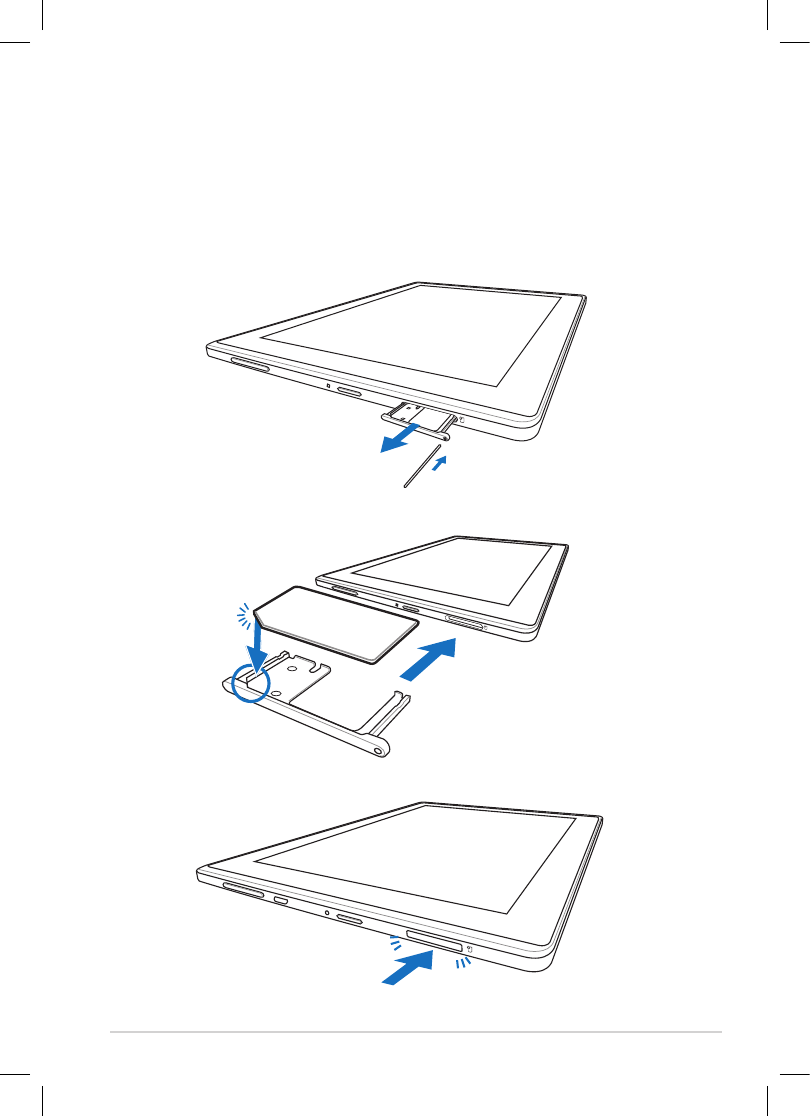
ASUS Transformer Pad
1
ASUS Transformer Pad QSG
TF300TL 3G Connection Manager
E7220
Installing SIM card
1. Use a straightened paper clip to press the SIM card tray eject button.
2. Remove the tray from the slot. Orient and place the SIM card on the tray.
15060-06G00000
3. Firmly push the SIM card tray back to the slot.
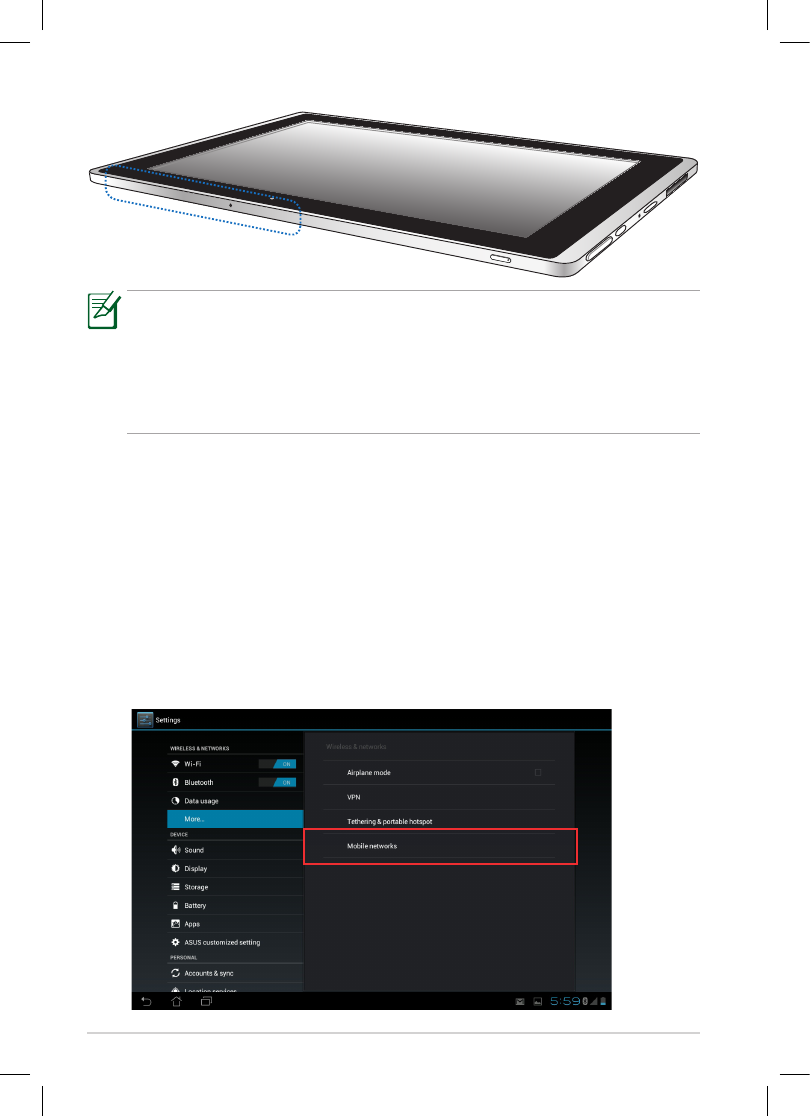
ASUS Transformer Pad
2
Conguring APN settings
Your ASUS Transformer Pad automatically detects and connects to the
3G network once you install the SIM card. If not, follow the instructions to
manually congure the Access Point Name (APN) settings on your ASUS
Transformer Pad.
To congure APN settings
1. Tap the Apps menu on the top right corner of the Home Screen and tap
Settings.
2. Tap More... under Wireless & networks on the left panel and tap
Mobile networks.
1. The 3G antenna is placed on the top side of your ASUS Transformer
Pad.
2. ASUS Transformer Pad supports the Long Term Evolution Standard
(LTE), the wireless standard for high-speed data transfer. Your ASUS
Transformer Pad’s LTE icon varies with dierent mobile service
providers/carriers.
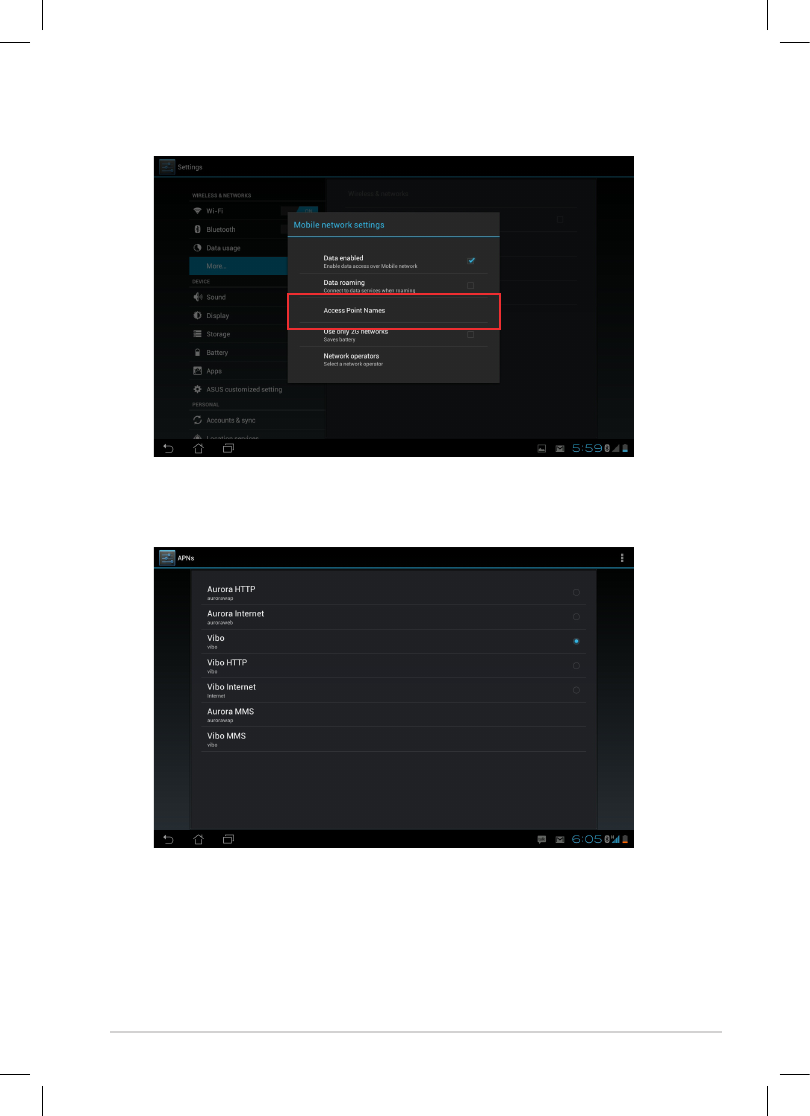
ASUS Transformer Pad
3
3. Tap Access Point Names.
4. Tap the service or network you would like to connect to.
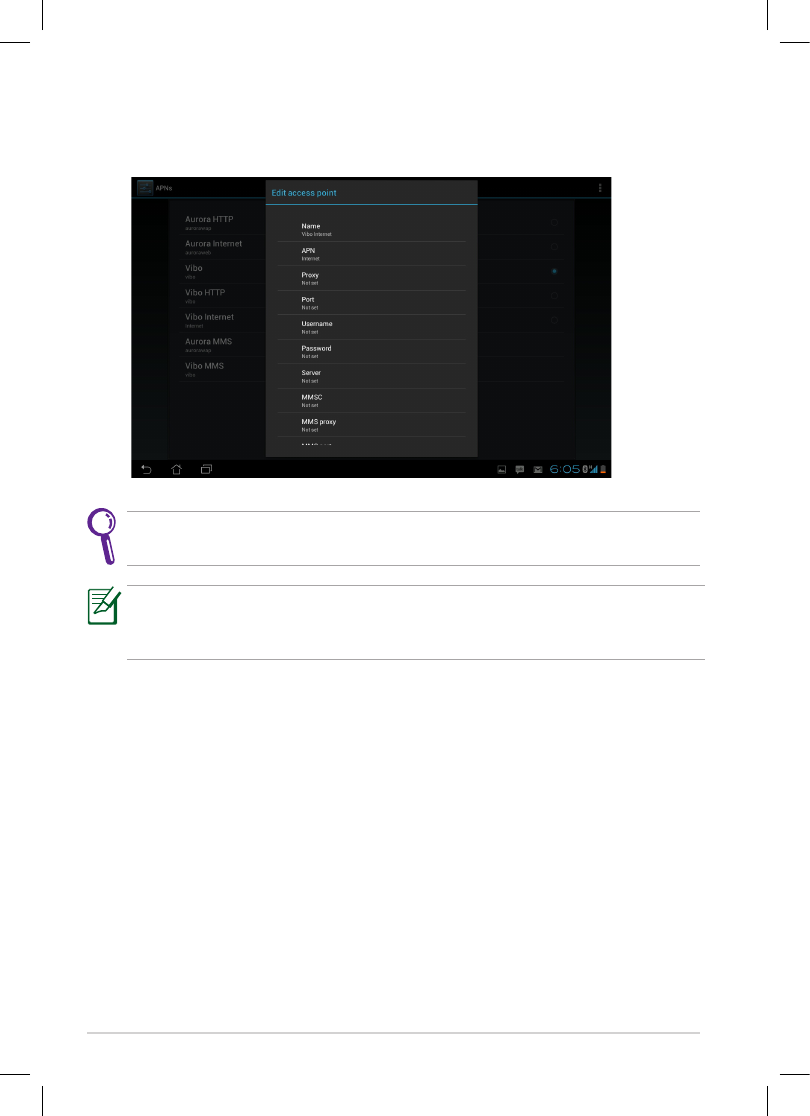
ASUS Transformer Pad
4
5. Call your mobile service provider, ask for the APN related information
and ll in all the elds needed. Scroll down for more elds.
Fill in suggested elds APN, MMSC, MMS proxy, MCC, and MNC. The
required elds for APN may vary with your 3G network service provider.
Your ASUS Transformer Pad connects to the Internet through the wireless
access point when WiFi and 3G networks are both available. Disable WiFi
function to access 3G networks.
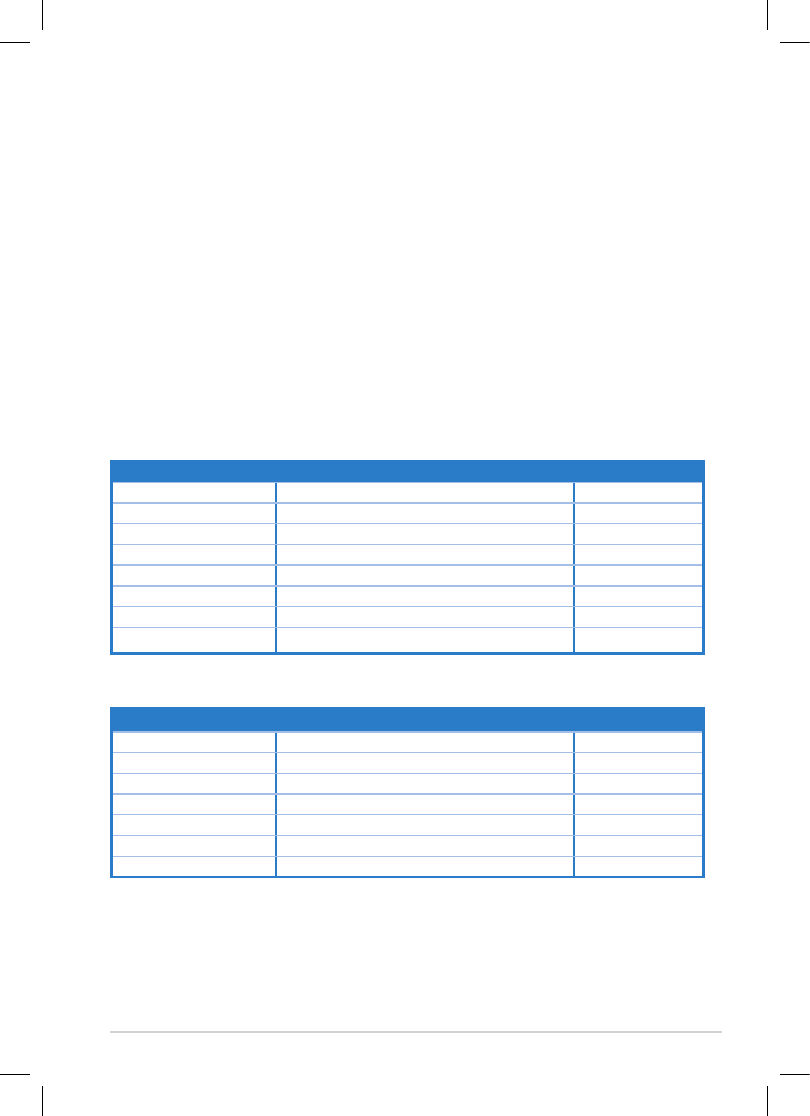
ASUS Transformer Pad
5
Appendix
RF Exposure information (SAR)
THIS MODEL MEETS INTERNATIONAL GUIDELINES FOR EXPOSURE TO RADIO
WAVES.
Your mobile device is radio transmitter and receiver. It’s designed not to
exceed the limits for exposure to radio waves recommended by international
guidelines. These guidelines were developed by the independent scientic
organization ICNIRP and include safety margins designed to assure the
protection of all persons, regardless of age and health.
The guidelines use a unit of measurement known as the Specic Absorption
Rate, or SAR. The ICNIRP SAR limits for mobile devices used by the general
public are as follows:
ASUS Transformer Pad TF300TL (FCC ID:MSQTF300TL )
Band Position SAR1g (W/kg)
GSM850 Body (Bottom Face_0 cm Gap) 1.51
GSM1900 Body (Bottom Face_0 cm Gap) 1.27
WCDMA Band V Body (Secondary Landscape_0 cm Gap) 1.42
WCDMA Band IV Body (Secondary Landscape_0 cm Gap) 1.33
WCDMA Band II Body (Bottom Face_0 cm Gap) 1.49
LTE Band 4 Body (Secondary Landscape_0 cm Gap) 1.41
LTE Band 17 Body (Bottom Face_0 cm Gap) 1.15
802.11 b/g/n Body (Bottom Face_0 cm Gap) 0.134
This device has been tested and meets the FCC RF exposure guidelines when
used in direct contact with the body.
Band Position SAR1g (W/kg)
GSM850 Body (Bottom Face_1 cm Gap) 0.707
GSM1900 Body (Secondary Landscape_1.1 cm Gap) 1.39
WCDMA Band V Body (Bottom Face_1 cm Gap) 0.565
WCDMA Band IV Body (Secondary Landscape_1.1 cm Gap) 1.25
WCDMA Band II Body (Bottom Face_1 cm Gap) 0.937
LTE Band 4 Body (Secondary Landscape_1.1 cm Gap) 1.03
LTE Band 17 Body (Bottom Face_1 cm Gap) 0.476
Highest 0 cm 1-g SAR Summary
Verication of SAR Compliance
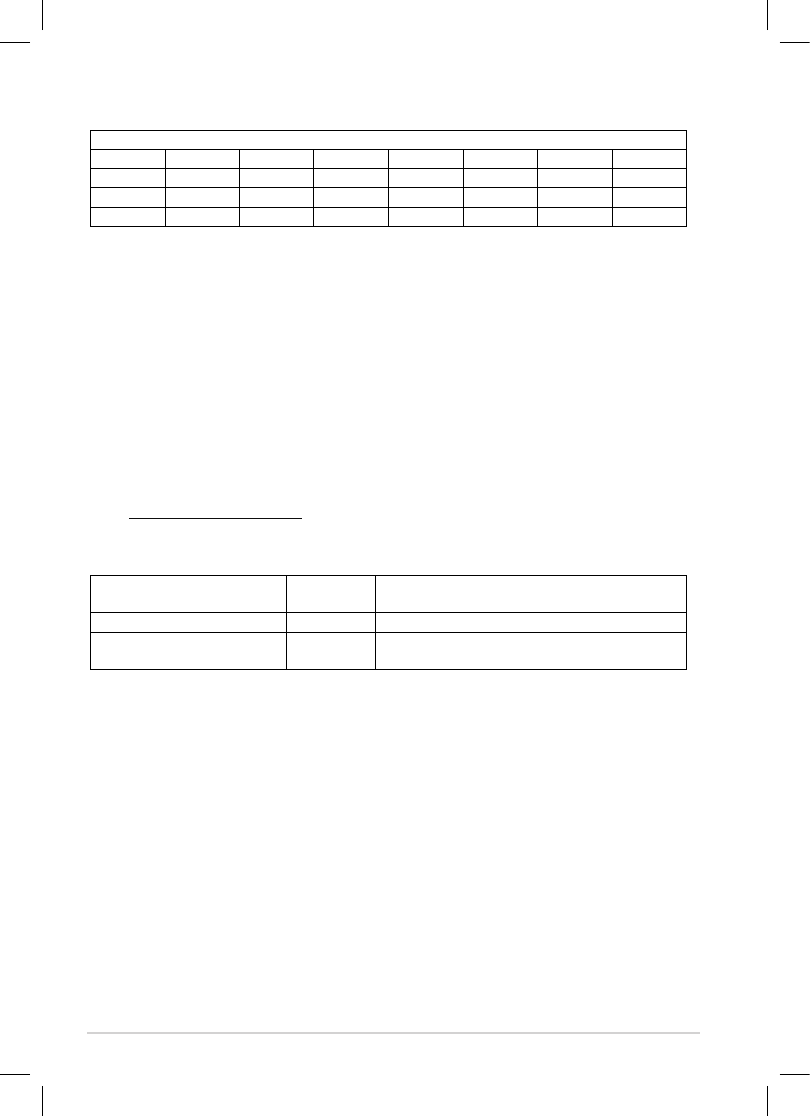
ASUS Transformer Pad
6
This equipment may be operated in:
AT
BE
BG
CH
CY
CZ
DE
DK
EE
ES
FI
FR
GB
GR
HU
IE
IT
IS
LI
LT
LU
LV
MT
NL
NO
PL
PT
RO
SE
SI
SK
TR
Products with 2.4–GHz Wireless LAN Devices France
L'utilisation de cet equipement (2.4GHz wireless LAN) est soumise à certaines
restrictions: cet equipement peut être utilisé à l'interieur d'un batiment en utilisant
toutes les frequences de 2400 a 2483.5MHz (Chaine 1–13). Pour une utilisation
en environement exterieur, les frequences comprises entre 2400-2454 MHz
(Chaîne 1-9) peuvent être utilisé. Pour les dernières restrictions, voir
http://www.art-telecom.fr.
For 2.4–GHz wireless LAN operation of this product, certain restrictions apply.
This equipment may use the entire–2400–MHz to 2483.5–MHz frequency band
(channels 1 through 13) for indoor applications. For outdoor use, only 2400-2454
MHz frequency band (channels 1-9) may be used. For the latest requirements,
see http://www.art-telecom.fr.
Wireless LAN Module’s Maximum EIRP
Frequency Ranges
(MHz)
Indoors
Outdoors
2400 MHz ~ 2446.5 MHz
10mW
Not Permitted
2446.5 MHz ~ 2483.5
MHz
100mW
100mW on private property with Ministry
of Defense approval.
Users only use the charge with Adaptor, you can not use the connection to
USB interfaces with USB 2.0 version or higher.
Please make sure the temperature for adapter will not be higher than 40 ˚C
Please make sure the temperature for device will not be higher than 40 ˚C
The device could be used with a separation distance of 0cm to the human
body.
The adapter shall be installed near the equipment and shall be easily
accessible.
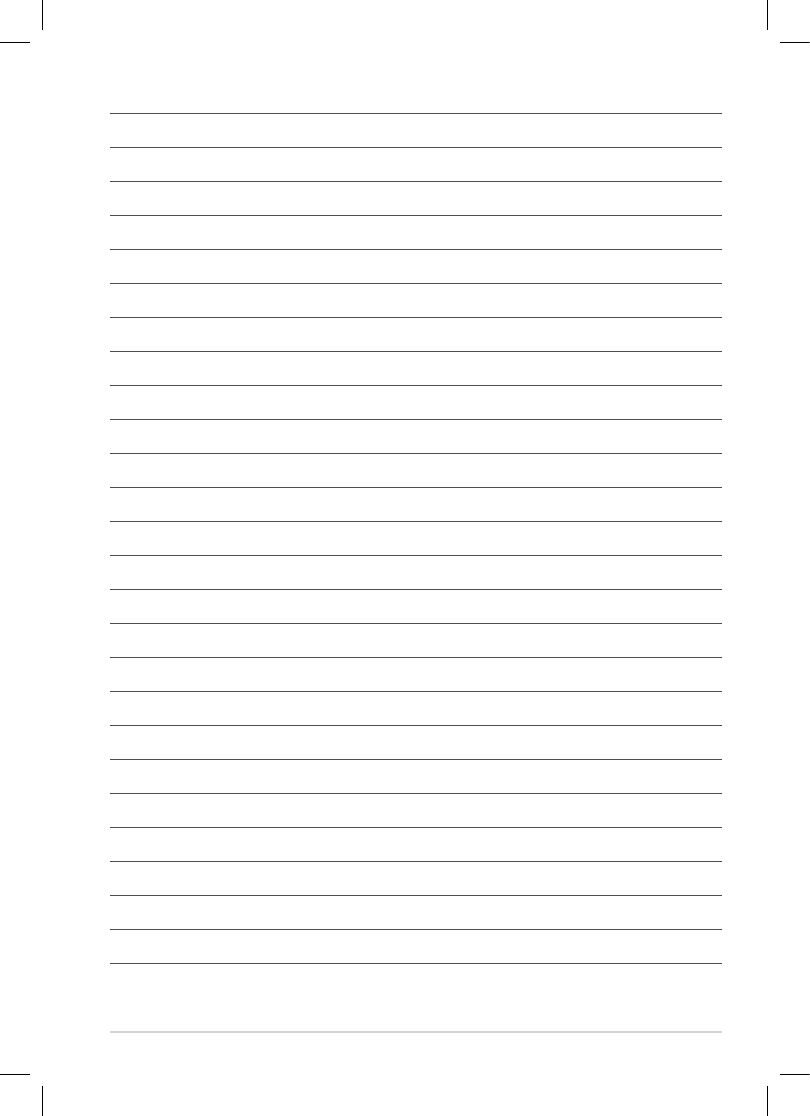
ASUS Transformer Pad
7
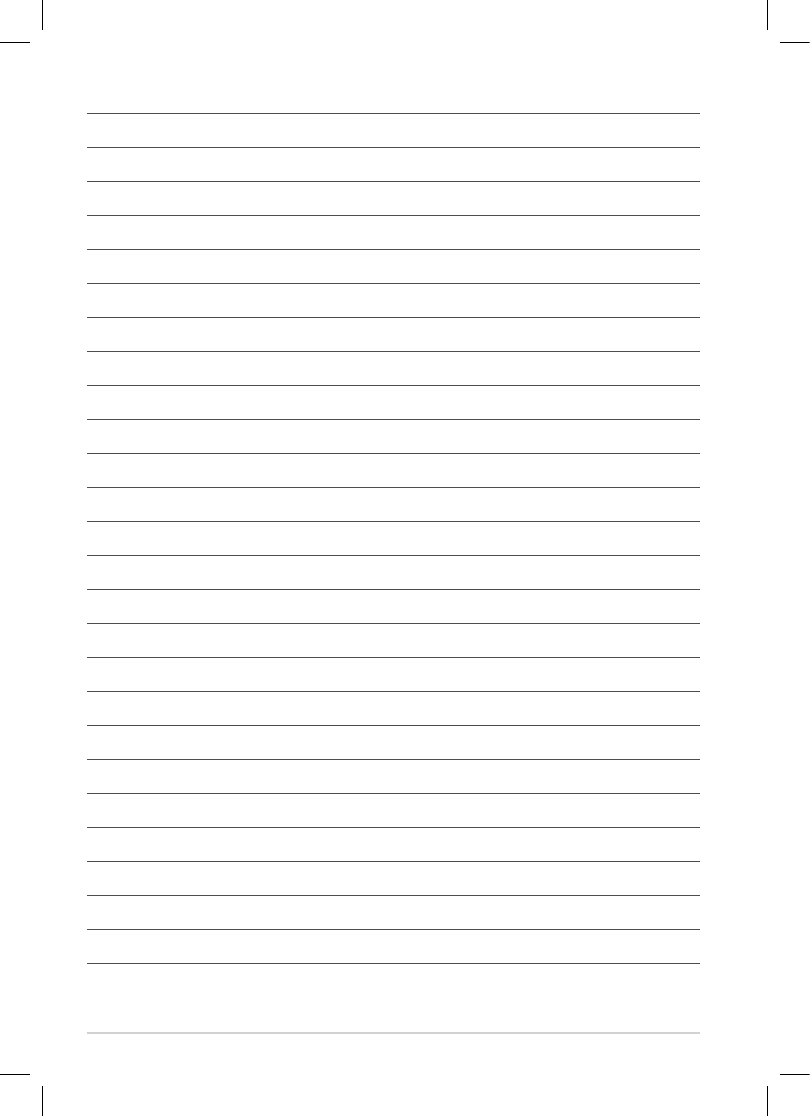
ASUS Transformer Pad
8